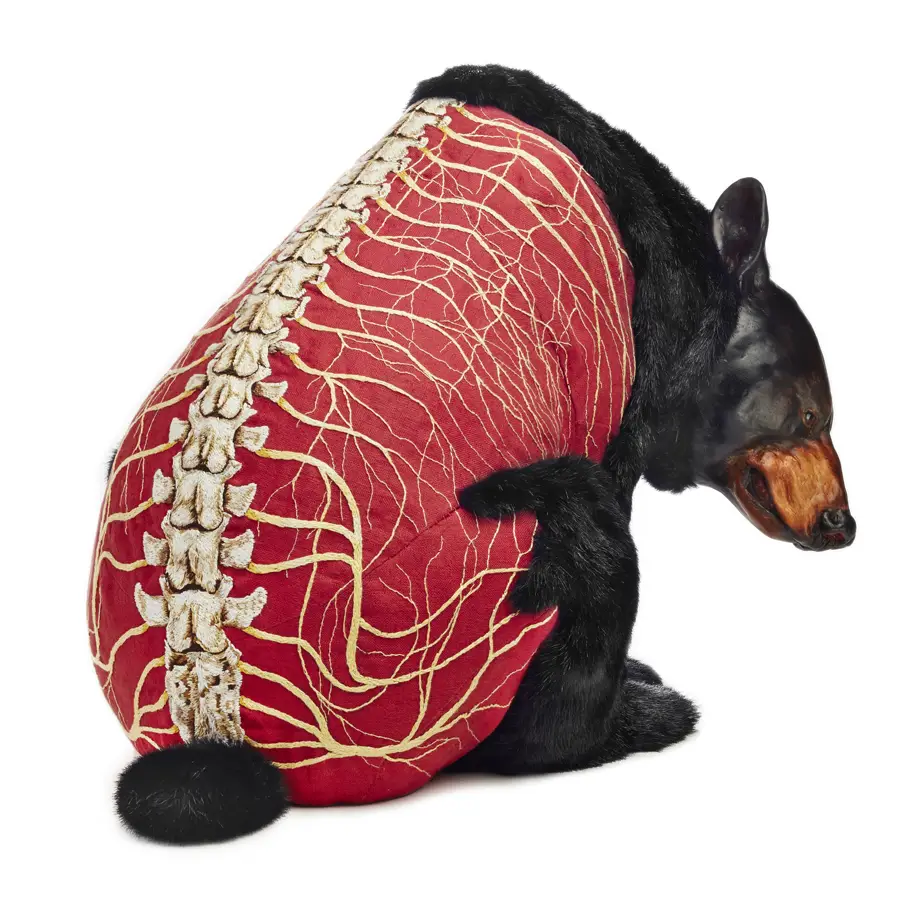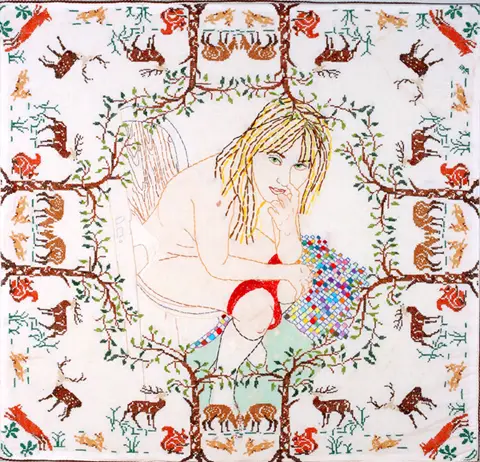US-based artist Deborah Simon‘s creations, a unique blend of soft sculpture and anatomical embroidery, showcase her profound interest in evolution and the artificial categorization of nature. Her ‘Flayed Bears’ project, notable for its intricate embroidery and realistic portrayal, highlights the dichotomy between natural ferocity and imposed vulnerability. This series, a testament to her craftsmanship, evokes deep emotional responses, blending the real with the surreal in a thought-provoking display.

“My work walks the line between taxidermy, toy and sculpture. Each sculpture is meticulously fabricated to create an unnervingly accurate but slightly off version of the natural animal.

“Evolution has always held a particular fascination for me, informing how I create and group the animals in my work. As I’ve read and dug through museum collections to research my pieces, western science’s mania for labelling, codifying and collecting has stood out. Most of this categorizing bears little resemblance to how animals and plants exist out in the natural world and I find this disconnect fascinating.

“The Flayed Bears play with ideas around stuffed toys, taxidermy and classification. Bears especially interest me as they are the ultimate stuffed animals; both the iconic plush toy and the prized taxidermy specimen for hunters.
Most of all the sculptures deal with vulnerability. A stuffed bear is the enduring toy of childhood. The fierce predator declawed and defanged to become a child’s beloved friend and sense of security. The pieces explore the tension between the reality of the animal and the vulnerability imbued in toy.

“Their fur is removed on the body, leaving a linen skin, as if they’d been flayed or like undressed porcelain dolls, with the hard sculpted fur covered head and paws connected to the soft linen body. On the linen I’ve embroidered different organ systems that I felt best represented each species.”

I find these pieces incredibly powerful. Not only are they physically large, and therefore a feat of technical expertise, but the characterisation of the bears and their subsequent flaying is really quite moving.
Reminiscent of bad circuses from the past, you can feel the pain of the animals, their stance evoking captivity. Deborah’s sculptural prowess is clear as these beasts are unnervingly realistic, and yet their flayed nature reiterates their unreality.

The removal of skin and embroidery of their inner workings elicits a response akin to that of traditional taxidermy – despite how cool small bits of taxidermy might be these days, there’s something haunting about seeing big beasts turned into trophies.
Deborah’s work is simply clay and fur and stitch, but her execution is so well done that I feel like crying at the demise of these beasts. What’s more, I often think of these beings, and wonder about their wellness, despite them being inert objects.

While Bears were Deborah’s first foray into this realm, her work on Flayed Rabbits packs a similar punch, and while the cute cultural references may not be as pervasive as with bears, her rabbits remind us of their wilderness.

And the work does not stop with Flayed Animals, as Deborah has made installation work, video art and sketches that all play with the main theme of her work. Her Roost installation of life-sized flying foxes is particularly visceral.
Deborah walks on the wild side, using embroidery and sculptural techniques that are deliberately evocative, but she does not force the issues on us. As with artists like Ana Teresa Barboza, the natural world is presented to us with a sense of rawness, of frustration, but it is our own actions that have created that tension.

To enjoy the full breadth of Deborah Simon’s work, you can visit her website or follow her on Instagram.




